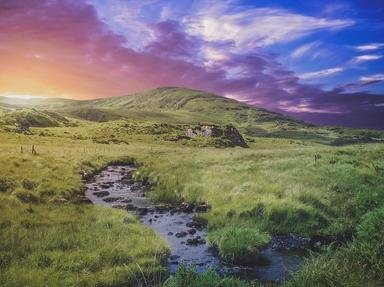Quiz Answer Key and Fun Facts
1. In April 1914, the UVF (Ulster Volunteer Force) smuggled in guns and ammunition from Germany. Where and when were the guns smuggled in to?
2. When the Great War broke out, Sir Edward Carson saw it as an opportunity to do what?
3. Which of the following was NOT in the original Military Council of the I.R.B?
4. When the insurgents began the uprising, they established their headquarters at the General Post Office (GPO). What was the name of the street that the GPO was on, at the time of the uprising?
5. Where did Eamon de Valera and his insurgents fight from when they fought the British Army on April 26th, 1916?
6. Which of these ordered all insurgents to lay down their arms on Saturday, the 29th of April 1916, leading to the surrender of the insurgents?
7. Which one of the following is NOT a reason that led to the uprising failing?
8. How many of the seven people who signed the Proclamation of The Irish Republic were executed?
9. James Connolly's execution was arguably the execution that most outraged the Irish. What did the British do that outraged the Irish?
10. At a later date, what caused the Irish public to change their view towards those who fought during the uprising against the British?
Source: Author
andy_1234
This quiz was reviewed by FunTrivia editor
bloomsby before going online.
Any errors found in FunTrivia content are routinely corrected through our feedback system.

